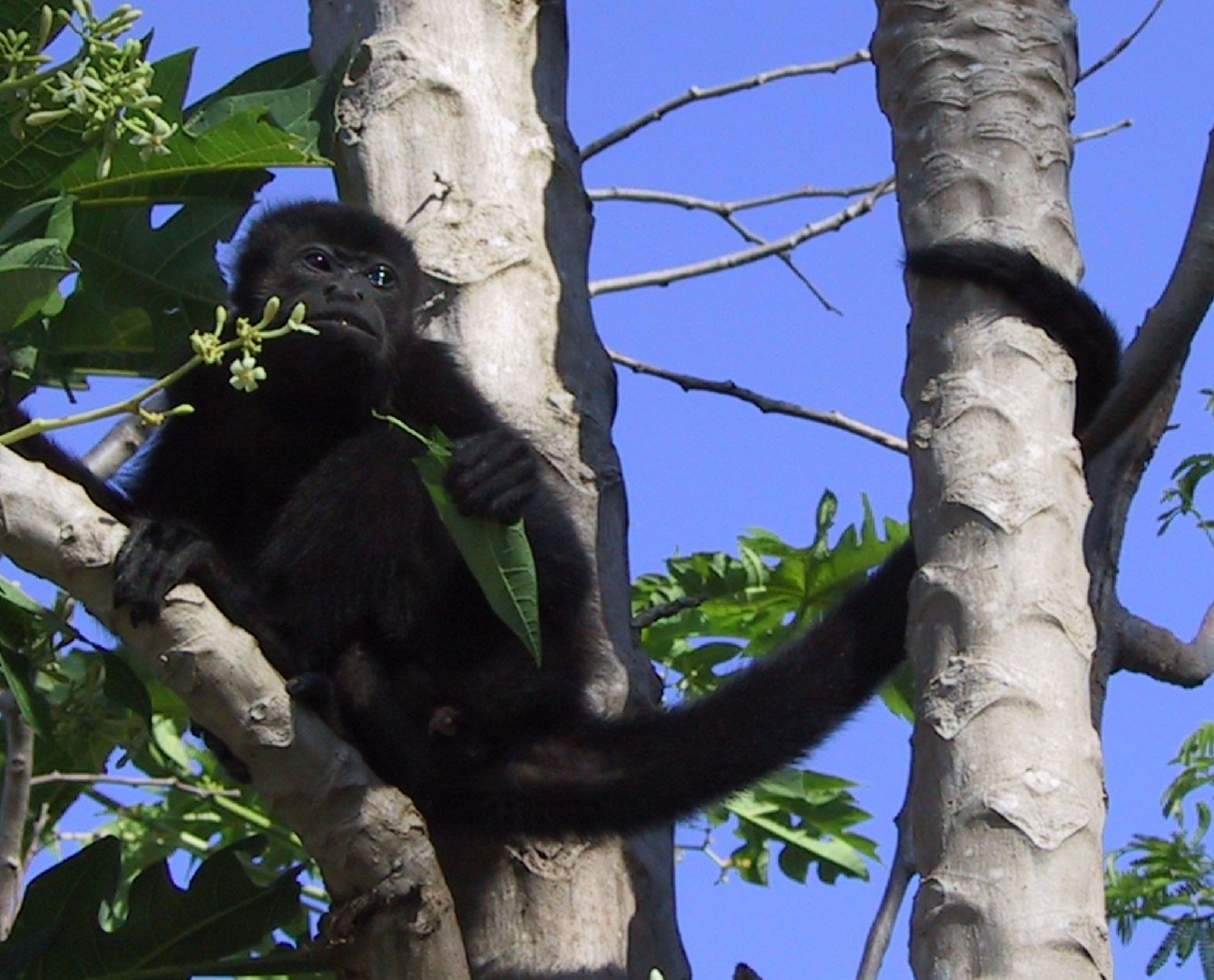Guatemalan black howler
A species of Howler monkeys, Also known as Baboon, Mexican black howler monkey, Lawrence’s howler monkey Scientific name : Alouatta pigra Genus : Howler monkeys
Guatemalan black howler, A species of Howler monkeys
Also known as:
Baboon, Mexican black howler monkey, Lawrence’s howler monkey
Scientific name: Alouatta pigra
Genus: Howler monkeys
Content
Description General Info
 Photo By Ruestz , used under CC-BY-SA-3.0 /Cropped and compressed from original
Photo By Ruestz , used under CC-BY-SA-3.0 /Cropped and compressed from original Description
The Guatemalan black howler is the largest of the howler monkey species and one of the largest of the New World monkeys. Guatemalan black howler males are larger than those of any other Central American monkey species. On average, males weigh 11.4 kg (25 lb) and females weigh 6.4 kg (14 lb). The body is between 521 and 639 mm (20.5 and 25.2 in) in length, excluding the tail. The tail is between 590 and 690 mm (23 and 27 in) long. Adults of both sexes have long, black hair and a prehensile tail, while infants have brown fur. Males over four months old have white scrotums. The Guatemalan black howler shares several adaptations with other species of howler monkey that allow it to pursue a folivorous diet (mostly leaves). Its molars have high shearing crests, to help it eat the leaves, and the male of the species has an enlarged hyoid bone near the vocal cords. This hyoid bone amplifies the male howler's calls, allowing it to locate other males without expending much energy, which is important, since leaves are a low-energy food. Howling occurs primarily at dawn and at dusk. The Guatemalan black howler is diurnal and arboreal. It lives in groups of generally one or two adult males, with a ratio of about 1.3 females for every male. Groups generally have between two and 10 members, including juveniles, but groups as large as 16 members have been studied. The home range is between 3 and 25 hectares. Population density can exceed 250 monkeys per square kilometer in the Community Baboon Sanctuary in Belize. The Guatemalan black howler's diet includes mostly leaves and fruit. Flowers also make up a small part of the diet. The breadnut tree can provide as much as 86% of the monkey's diet during some seasons. As with other howler monkey species, the majority of the Guatemalan black howler's day is spent resting. Eating makes up about a quarter of the day, moving about 10% of the day, and the remainder of the day is spent in socializing and other activities. Females reach sexual maturity at four, and males reach sexual maturity between six and eight years old. Males leave their natal group upon reaching sexual maturity, but females generally remain with their natal group. They can live up to 20 years. 
General Info
Lifespan
20-25 years
Diet
The diet of guatemalan black howler mainly consists of arboreal vegetation, predominantly leaves, but they also feed on fruits, flowers, and immature seeds. Infrequently, they may consume tree bark and soil.
Appearance
Guatemalan black howler is a robust primate with a heavily muscled body which can measure up to 56 cm, excluding its lengthy tail. Its fur is coarse and mainly black, but the belly is sometimes yellowish-brown. A crown of hair atop its head, a pronounced brow ridge and a muzzle are notable features. Males are generally larger and darker than females, and young ones may have lighter fur on the face and neck.
Behavior
Guatemalan black howler is a highly social and diurnal species which lives in groups, showing clear hierarchical structures. It's primarily folivorous embarking on daily patterns of foraging in its forest habitat. Noted for its loud vocalizations, guatemalan black howler utilizes these calls for both communication and territorial displays.
Population
Decreasing
Scientific Classification
Phylum
Chordates Class
Mammals Order
Apes Family
Atelids Genus
Howler monkeys Species
Guatemalan black howler